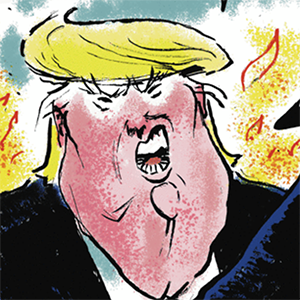New Car Review - 2007 Nissan Versa
The econo-box is yesterday's misery -- a relic of a time when anything small and affordable was, almost by definition, a slow, tinny, stripped-down little stinkpot you were embarrassed to be seen in and hated driving. These cars -- Pintos, Chevettes, Geo Metros, etc. -- were the last rung on the ladder before you gave up and hitched a ride.
Today's economy-compacts are so much better it's hard to believe our good fortune. They are better equipped, substantially more powerful, much safer and cost less (adjusted for inflation) than their ancestors of the not-so-long-ago past.
Nissan's Versa sedan proves the point.
Yes, it is an economical car. Its $12,550 price tag puts it among the lowest-cost new cars you can buy, in fact. And it is capable of delivering 36 mpg on the highway -- so it's pretty good on gas, too.
But it also comes standard with a six-speed manual transmission, a 122-hp DOHC engine, air conditioning with cabin filtration, electric-assist power steering and both side impact and head curtain air bags. As recently as three or so years ago, those features would have put the Versa in the same league as sporty compacts like the Honda Civic Si, drivetrain wise -- and looking mighty good compared to mid-priced and even entry-luxury cars, safety-wise.
By the standards of the '70s and '80s -- when the typical economy-priced car had maybe a 70-hp engine, no air bags at all, drum brakes all around, an AM single speaker radio (if you paid extra for it) and nothing but a speedo and a few idiot lights -- the Versa's a compact-sized Cadillac.
It's also the only so-called "B-car" (the other contenders being Honda's Fit and the Toyota Yaris) that offers a six-speed manual transmission (a CVT is optional) and its 1.8 liter, 122-hp engine outclasses both the Fit (1.5 liters, 109-hp) and the Yaris (1.5 liter, 106-hp) by a comfortable margin. The Versa's torque output -- 127 lbs.-ft. -- is also a lot healthier than the 103 lbs.-ft. and 105 lbs.-ft. of the Yaris and Fit.
The stats 9and some time spent behind the wheel) tell you the Nissan's the hot rod of the bunch -- giving up a few MPGs to its Toyota and Honda rivals (which top out at 40 and 38 mpg highway, respectivley) but offering a larger, stronger engine. With gas prices back to around $2 or so for unleaded regular, sacrificing 2-4 mpg in order to gain 15 or so extra horses (which in a small, lightweight car is a significant uptick) and an extra gear doesn't seem like a half-bad deal.
Even if fuel prices climb back to the $3 range, the Versa's 36 mpg won't put you in the poorhouse. All three B-cars are among the most economical non-hybrid small cars you can buy right now. And in the real world, the actual fuel economy difference between the Versa and its primary competitors may be a lot closer than the EPA's estimates indicate -- depending on how you drive and where you drive.
For example, it might take more pedal (and thus, burn more gas) to keep a Fit or Yaris up to speed on uphill climbs or in high altitude areas, situations where their smaller smaller, less powerful engines would be "givin' her all she's got, 'cap'n!" While the Versa, with more power in reserve, can keep up without having to floor it all the time -- thus burning less gas.
It easily handles steady-state cruising at 70-80 mph (routine speeds these days on many U.S. highways, regardless of the "posted limit") and the six-speed gearbox has sport car short throws and is fun to stir. The suspension's a little soft -- and the tires will squeal if you toss the Versa hard into a corner. But in normal driving (as opposed to the Speed Racer-style "testing" done by gearhead automotive journalists) it's not an issue -- and nothing you couldn't improve (if you wanted to drive it like Speed Racer) with the addition of more performance-oriented tires and maybe some suspension stiffeners.
Bottom line, the Versa's only slightly behind the best-in-class vehicles on the fuel economy issue -- but offers considerably more power/driving fun. It is both easy and pleasant to drive, never inspiring fear when trying to merge onto a highway or overtake slower-moving traffic.
It also comes standard with both side-impact and curtain air bags; these are included in the Fit as well -- but the Honda's $13,850 base price is $1,300 more than the Versa's. That's a good chunk of change -- especially at this price level. The Yaris sedan is nominally less expensive at $11,925 -- but the side/curtain air bags are not included. Add them ($650) and the price difference between the Yaris and the Versa disappears. The Versa's actually $25 less -- $12,550 vs. $12,575.
This isn't to say the Yaris is a bad car -- it isn't, by any means. Like the Fit, it is a heckuva little runabout with a surprisingly large interior (a B-car selling point) that doesn't feel, look or drive like a bottom feeder. What it does mean is you could buy the stronger Versa for about the same money -- and that is something to think about if you'd like a little more in the way of scoot than the Toyota is offering.
Or the Honda, for that matter.
With all its standard amenities, the $12,550 Versa S is more than livable as it sits. (Some buyers may even prefer the simplicity of the manual roll-up windows on the base model.) You also get a CD-playing 120 watt stereo, tire pressure monitor and rear wiper.
Anti-lock brakes are optional -- but can be added for $300 and you'll still be under $13k.
If you want more, you can order the higher trim SL model, which comes with power windows and locks as well as an upgraded stereo with MP3 capability and a 6-disc CD changer. The SL model starts at $14,550. It's a nice ride -- and can be made into a virtual entry-luxury car when fitted out with the optional keyless ignition system, leather wrapped steering wheel with secondary audio controls, Bluetooth connectivity, satellite radio (XM or Howard-friendly Sirius, your pick), sunroof and Sport Package with "aero" trim.
A Continuously Variable Transmisson (CVT) is available, too -- and becoming a signature feature of Nissan products as it's available on several other models, too -- including the Maxima and Murano. A CVT offers the ease of use of a conventional automatic but without the coffee-spilling "shift shock" of gear changes. Instead of the conventional four, five (or six) forward gears used in conventional automatics, a CVT uses variable diameter pulleys to constantly vary the effective final drive ratio of the engine, keeping the engine in the right RPM range at all times -- whether you're flooring it to pass a slowpoke or just cruising along with traffic. The CVT also offers the potential for some gain in fuel economy, too -- another reason why this type of transmission is becoming more commonplace.
The CVT is another feature unique to the Versa among cars in this class.
All the players in this segment are worth checking out, but if you want the extra power, the extra gear, standard side/curtain air bags (and an available CVT) the Versa's holding all the cards.
========
www.ericpetersautos.com (or EPeters952@aol.com) for comments







Comments